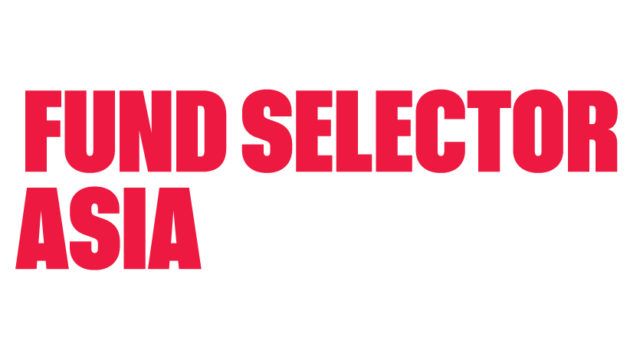The averages for the one- and five-year performances (to end-2016) for actively managed funds were better than those of the ETFs and also outperformed the sector, according to FE data. However, ETFs had significantly better performance on a three-year basis.
| 1-yr performance | 3-yr performance | 5-yr performance | |
| ETF Average |
-12.46 |
18.39 |
20.68 |
| Active Average |
-6.26 |
4.52 |
30.76 |
| Sector : HKM Equity China TR in US |
-8.52 |
2.07 |
17.28 |
Source: FE
The number of funds that performed better than the sector average is also consistent with the performance figures.
Number of outperforming actively-managed funds vs sector
|
Period |
Outperformed |
% |
Total # of funds |
|
1 year |
36 |
62% |
58 |
|
3 years |
20 |
43% |
47 |
|
5 years |
27 |
75% |
36 |
Source: FE
Number of outperforming ETFs versus sector
|
Period |
Outperformed |
% |
Total # of ETFs |
|
1 year |
10 |
32% |
31 |
|
3 years |
16 |
73% |
22 |
|
5 years |
9 |
60% |
15 |
Source: FE
Luke Ng, senior vice president of research at FE Advisory Asia, attributed the differences of performances to the underlying investments of both the funds and the ETFs. In particular, whether the fund is invested in either China’s A-shares (onshore equities) or the offshore market.
According to Ng, the majority of the China-focused ETFs track indices in the A-share market, while most of the actively-managed funds invest in the offshore market, with some of them launching even before the qualified foreign institutional investor (QFII) and renminbi qualified foreign institutional investor (RQFII) schemes were implemented.
China’s QFII and RQFII schemes allow foreign institutional investors to invest in onshore assets using US dollars and offshore RMB, respectively.
Both markets behave very differently. The differences could be seen in the CSI 300, an index for the onshore market, and the MSCI China, which is for the offshore market, Ng explained.
|
Index |
1-yr performance | 3-yr performance |
5-yr performance |
| CSI 300 |
-15.21 |
32.08 |
42.74 |
| MSCI China |
1.11 |
1.12 |
29.04 |
Source: FE
Like the performance figures of ETFs versus actively-managed funds, the CSI 300 on a three-year period was significantly better than MSCI China’s, Ng said. The one-year performance of both indices are also consistent with the ETF and active funds’ performance averages, he added.
“No wonder the performance of ETFs in three years should outperform active funds,” Ng said, adding that all the top five performing ETFs on a three-year period all invest in the onshore market (see below).
Ng noted that the onshore market is more volatile than the offshore market. For example, the volatility of the annualised three-year volatility of the CSI 300 is 26.44%, while MSCI China’s is 20.30%.
He expects the A-share market to continue to be more volatile than the offshore market this year.
Fees and efficient markets
According to Ng, the higher fees associated with China-focused funds, when compared to ETFs, are justifiable if the funds are able to outperform the market by a big margin.
Globally, assets from actively-managed funds are flowing into passive products as performance continues to underwhelm, according to a Moody’s report in December, as reported. In the US, for example, mutual fund flows into actively-managed funds have fallen from nearly $800bn in 2014 to about $400bn of inflows in 2015, while ETF issuances increased from around $1.3trn to $1.5 trn.
However, funds that are focused on emerging markets, such as China, are different from those that invest in Europe and the US.
“For an emerging market like China, the market is less efficient, so an active manager could have a better chance of outperforming the market as it would be easier for them to get better information than the general investor to make investment decisions,” Ng said.
Investors who invest in US or European funds would be more fee-sensitive as the active manager would have a more difficult time beating the index in efficient markets. “The extra fee that they pay to the active manager may not be enough to cover the outperformance that the manager provides,” Ng added.
The average ongoing charge fees for actively-managed China funds that are authorised for sale in Hong Kong is around 2%, while the ETF average is less than 1%, according to FE data.
____________________________________________________________________________
The best and worst performing ETFs and actively managed funds on a one-, three-, and five-year period ending 2016, according to FE data
| Best performing ETFs | Worst performing ETFs | ||
| 1-year performance | 1-year performance | ||
| Hang Seng FTSE China 50 Index TR in US |
2.97 |
DB X-Trackers CSI300 Transportation UCITS ETF TR in US |
-29.08 |
| DB X-Trackers FTSE China 50 UCITS ETF (DR) in US |
1.92 |
Harvest CSI Smallcap 500 Index ETF in US |
-25.59 |
| Hang Seng H Share Index TR in US |
1.67 |
C Shares CSI 300 Index in US |
-24.52 |
| Mirae Asset Horizons MSCI China in US |
0.85 |
DB X-Trackers CSI300 Utilities UCITS ETF TR in US |
-24.51 |
| DB X-Trackers MSCI China Index UCITS ETF (DR) in US |
0.33 |
DB X-Trackers CSI300 Industrials UCITS ETF TR in US |
-23.18 |
| 3-year performance | 3-year performance | ||
| Harvest MSCI China A 50 Index ETF TR in US |
37.77 |
Hang Seng H Share Index TR in US |
-3.78 |
| HS China A Industry Top Index in US |
37.36 |
DB X-Trackers MSCI China Index UCITS ETF (DR) in US |
-1.47 |
| Harvest MSCI China A Index ETF TR in US |
35.97 |
iShares MSCI China Index ETF TR in US |
-1.1 |
| China CES China A80 Index ETF in US |
34.89 |
DB X-Trackers FTSE China 50 UCITS ETF (DR) in US |
0.61 |
| BOCHK WISE SSE 50 China Tracker in US |
34.41 |
Hang Seng FTSE China 50 Index TR in US |
0.73 |
| 5-year performance | 5-year performance | ||
| DB X-Trackers CSI300 Consumer Discretionary UCITS ETF TR in US |
39.08 |
DB X-Trackers CSI300 Transportation UCITS ETF TR in US |
7.42 |
| BOCHK WISE SSE 50 China Tracker in US |
34.17 |
DB X-Trackers CSI300 Industrials UCITS ETF TR in US |
10.76 |
| iShares FTSE A50 China Index ETF TR in US |
27.54 |
Hang Seng H Share Index TR in US |
10.84 |
| SAM Value China ETF TR in US |
25.68 |
Hang Seng FTSE China 50 Index TR in US |
15.23 |
| iShares MSCI China Index ETF TR in US |
24 |
DB X-Trackers FTSE China 50 UCITS ETF (DR) in US |
15.75 |
| Best performing active funds | Worst performing active funds | ||
| 1-year performance | 1-year performance | ||
| HSBC China Momentum in US |
9.3 |
BOCHK China Golden Dragon in US |
-23.9 |
| Zeal Voyage China in US |
6.75 |
CSI RMB China A-Shares Diversification in US |
-23.22 |
| Matthews Asia China Dividend in US |
5.66 |
HS China A-Share Flexipower in US |
-21.88 |
| BlackRock GF China in US |
3.83 |
Invesco China Opportunity III in US |
-20.17 |
| HS China Equity in US |
2.65 |
JPM China A-Share Opportunities in US |
-19.26 |
| 3-year performance | 3-year performance | ||
| Allianz China A-Shares in US |
56.19 |
Shenyin Wanguo China Policy Focus in US |
-31.22 |
| HS China B-Share Focus in US |
54.13 |
BEA Union Investment China Phoenix in US |
-26.23 |
| Schroder China Equity Alpha in US |
52.16 |
First State China Focus in US |
-23.36 |
| BlackRock China A-Shares in US |
34.15 |
Nikko AM China Multi Access Opportunities in US |
-17.31 |
| HS China A Share Focus in US |
31.87 |
BOCHK China Golden Dragon in US |
-15.78 |
| 5-year performance | 5-year performance | ||
| HS China B-Share Focus in US |
90.68 |
Nikko AM China Multi Access Opportunities in US |
-2.37 |
| UBS (Lux) Equity China Opportunity (USD) in US |
87.1 |
BOCHK China Golden Dragon in US |
0.68 |
| Allianz China A-Shares in US |
71.15 |
Aberdeen Global Chinese Equity in US |
3.86 |
| HSBC China Momentum in US |
60.1 |
Matthews Asia China in US |
8.09 |
| Invesco China Focus Equity in US |
55.59 |
First State China Focus in US |
8.57 |

















